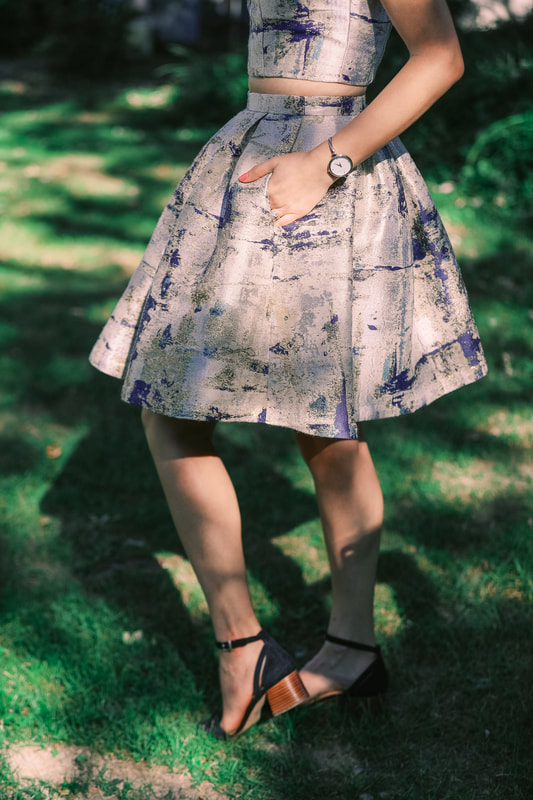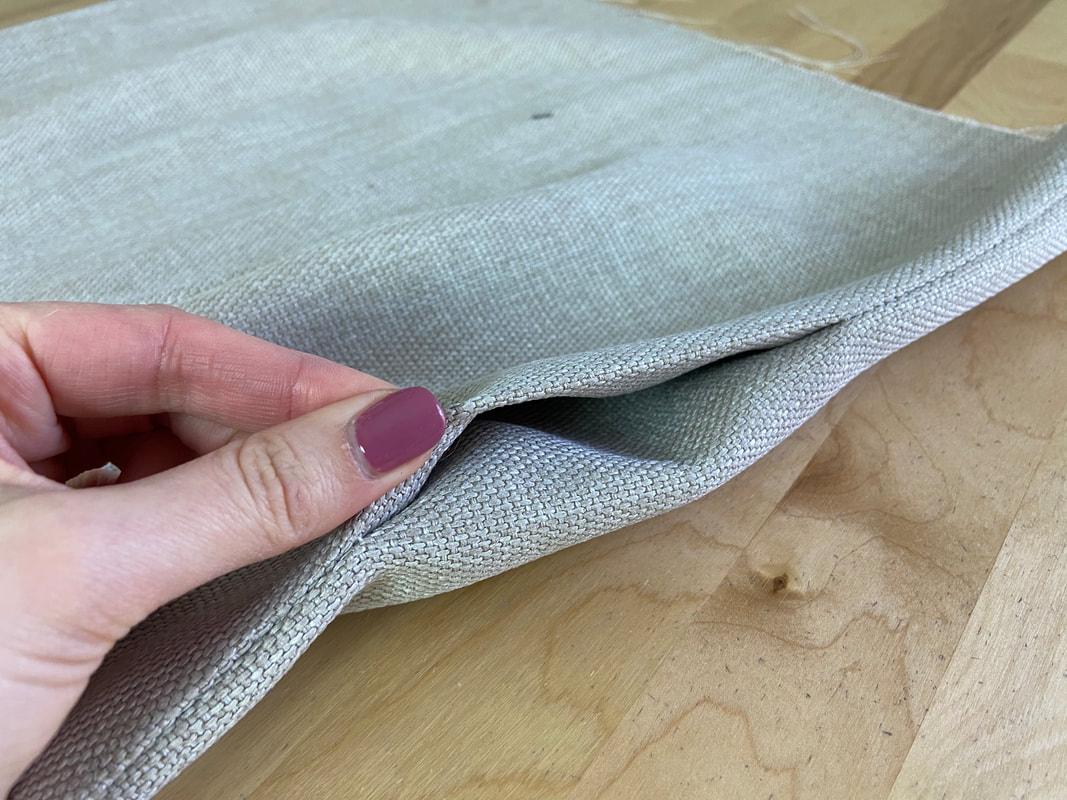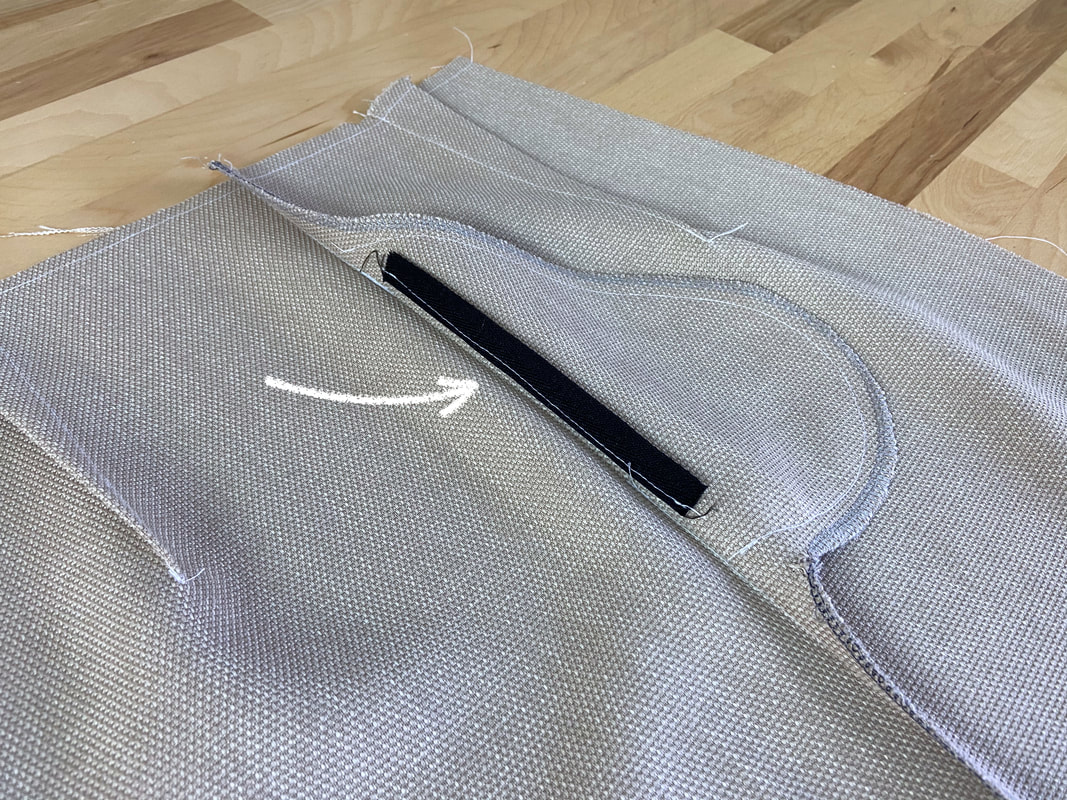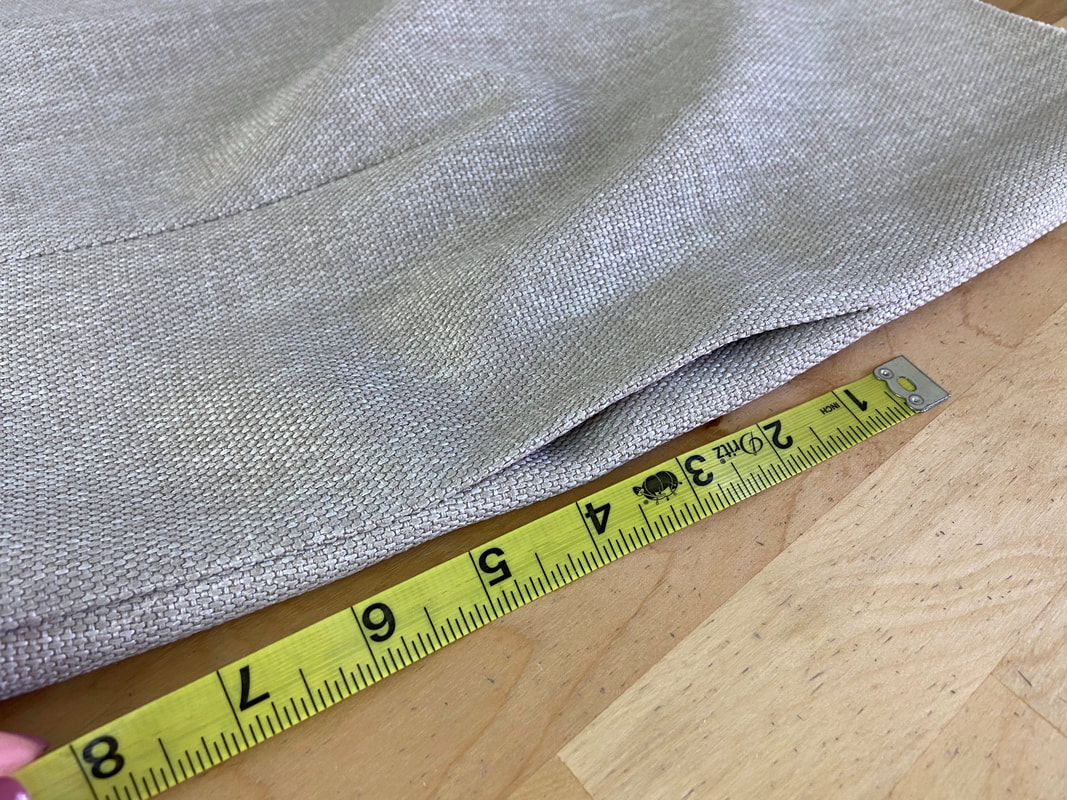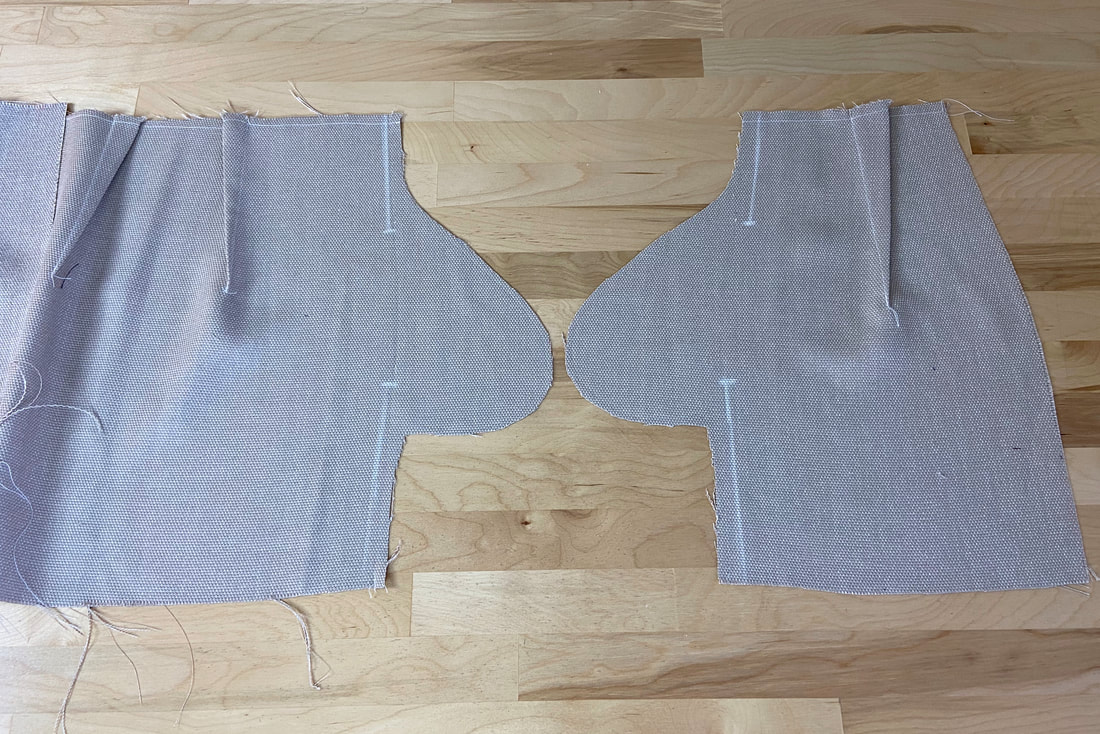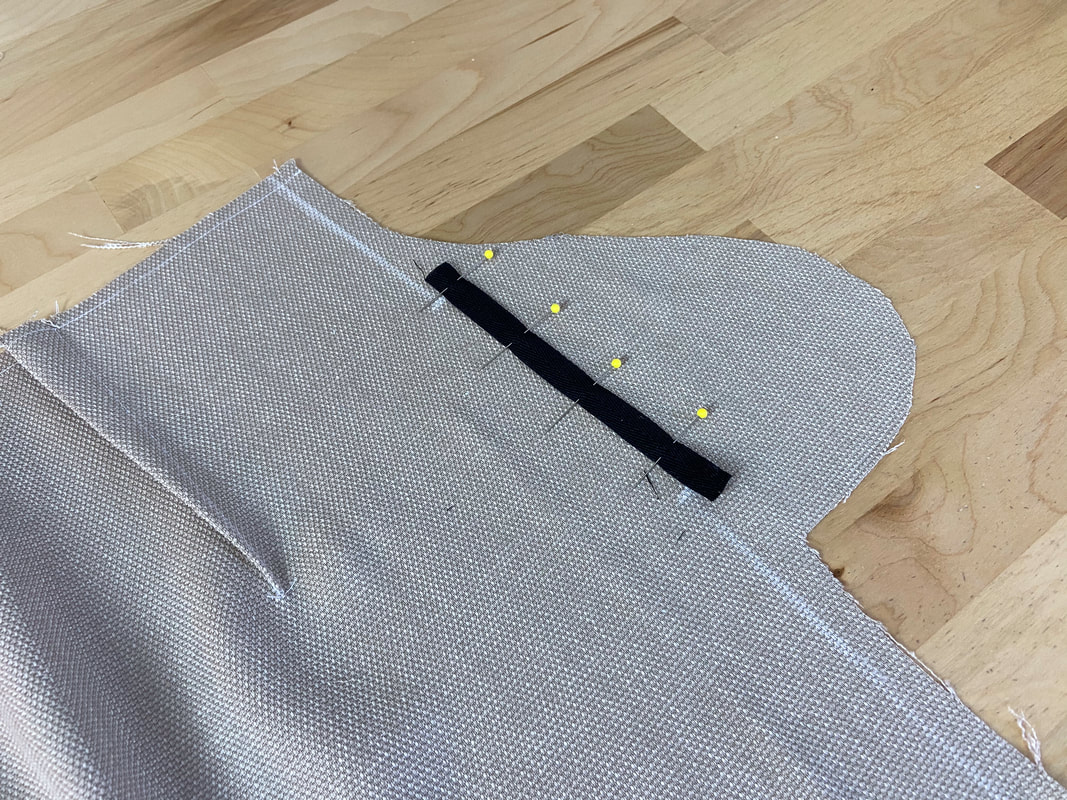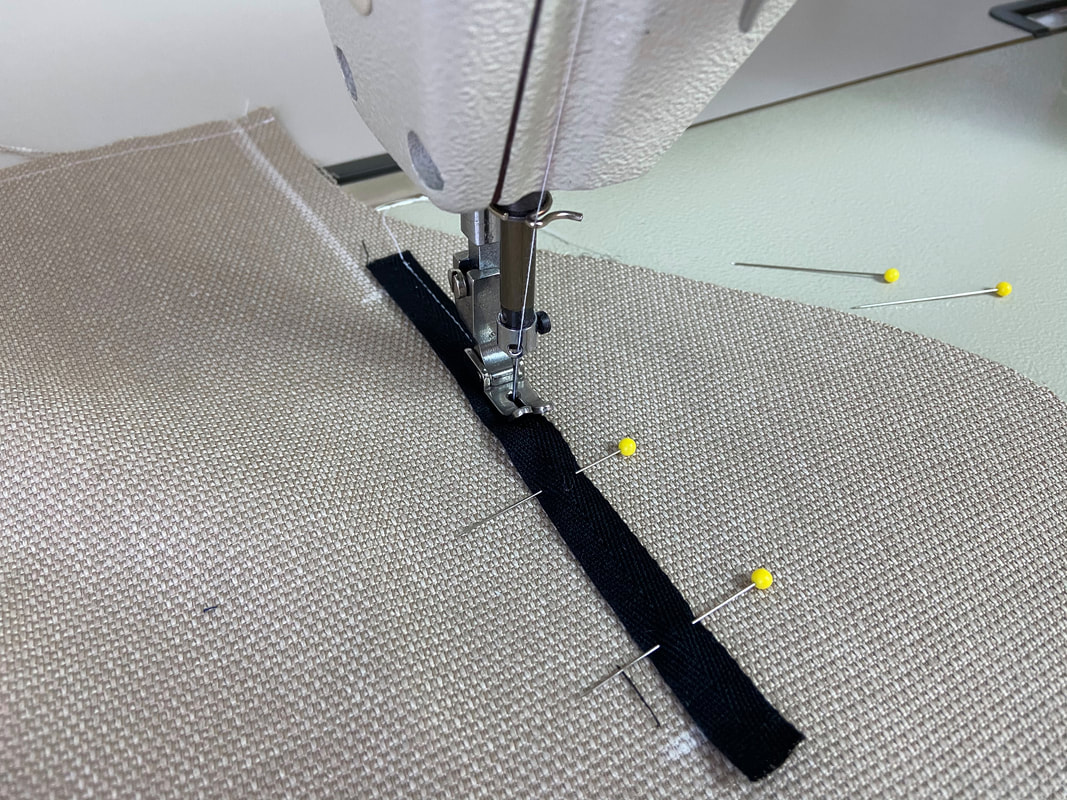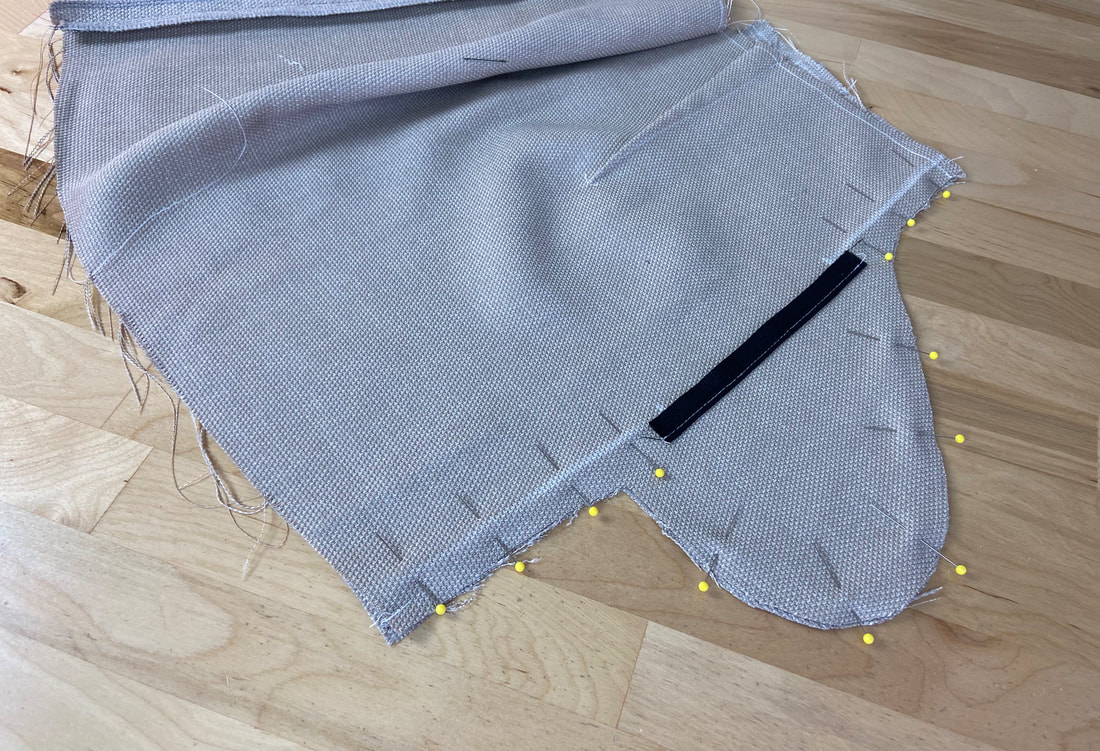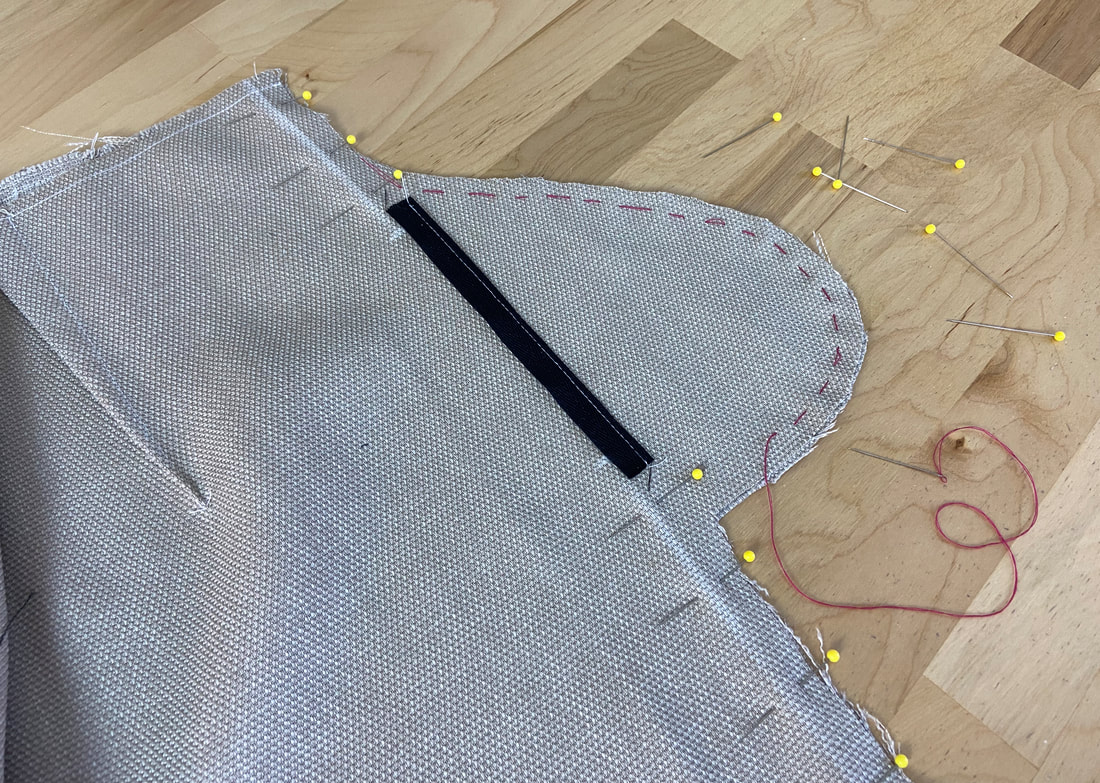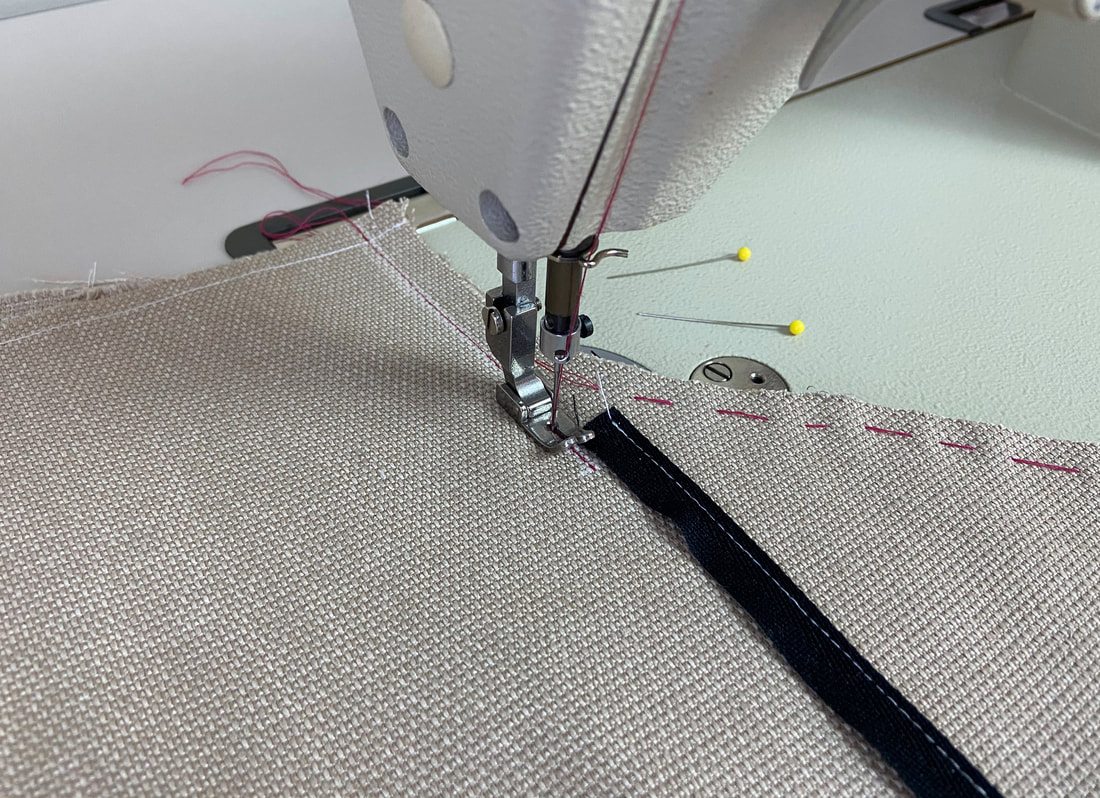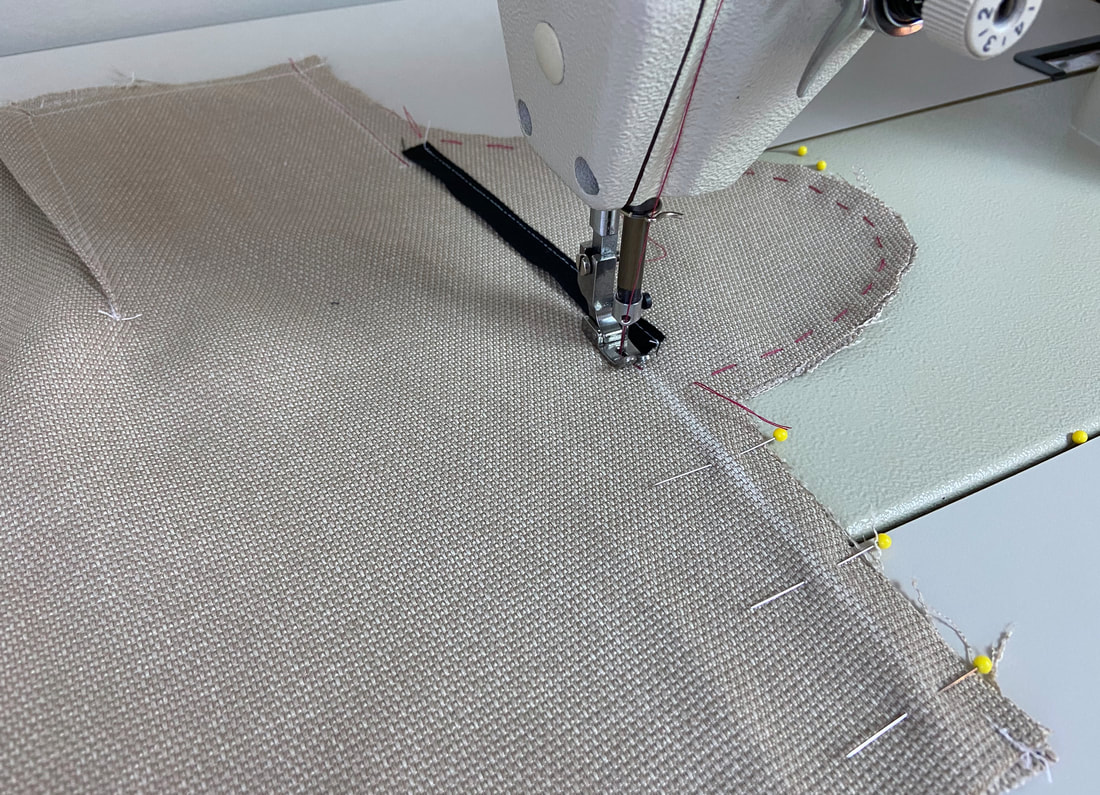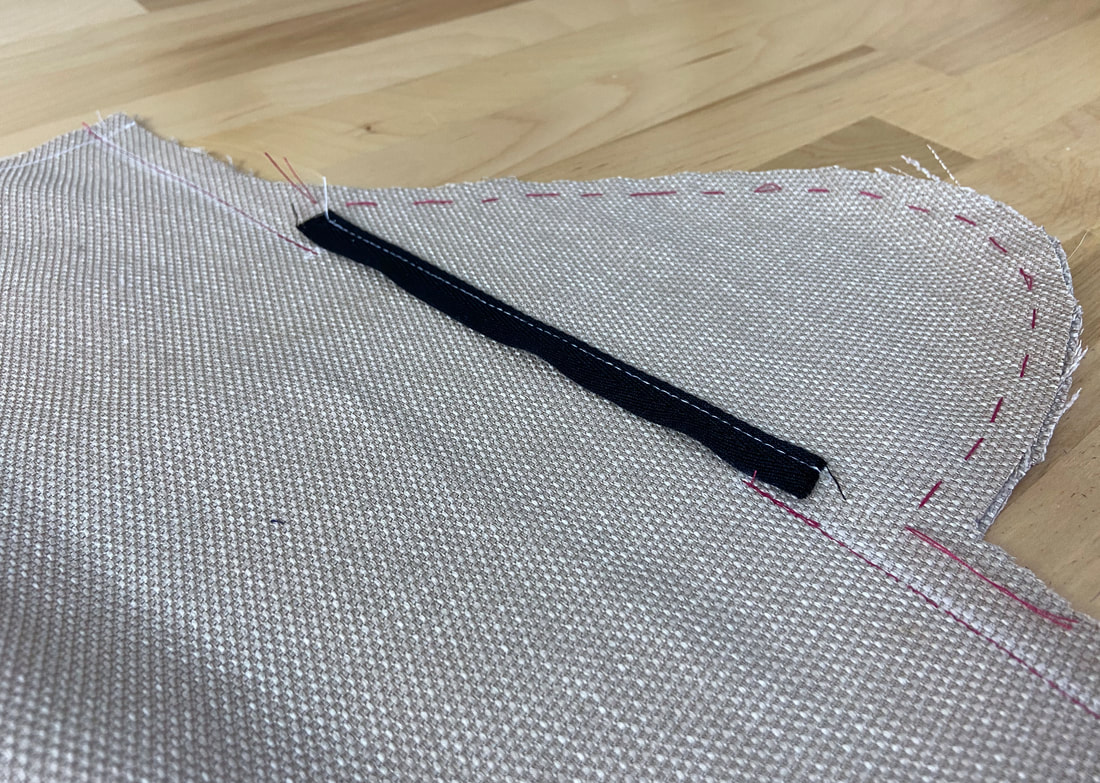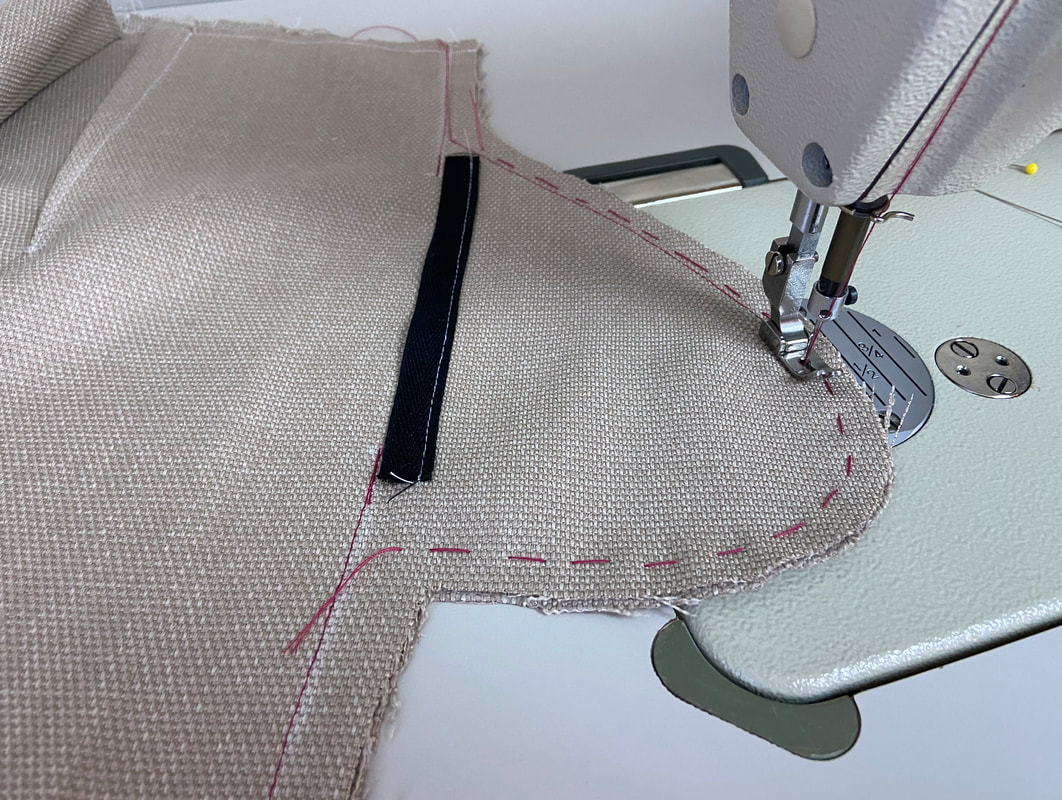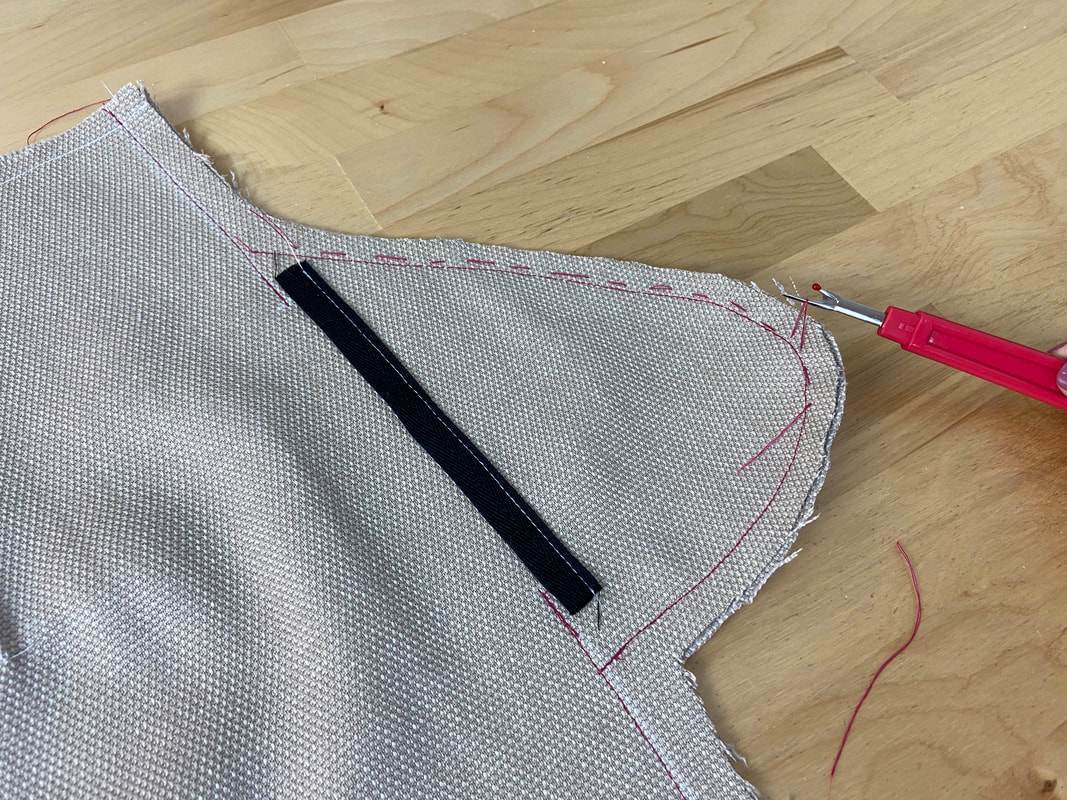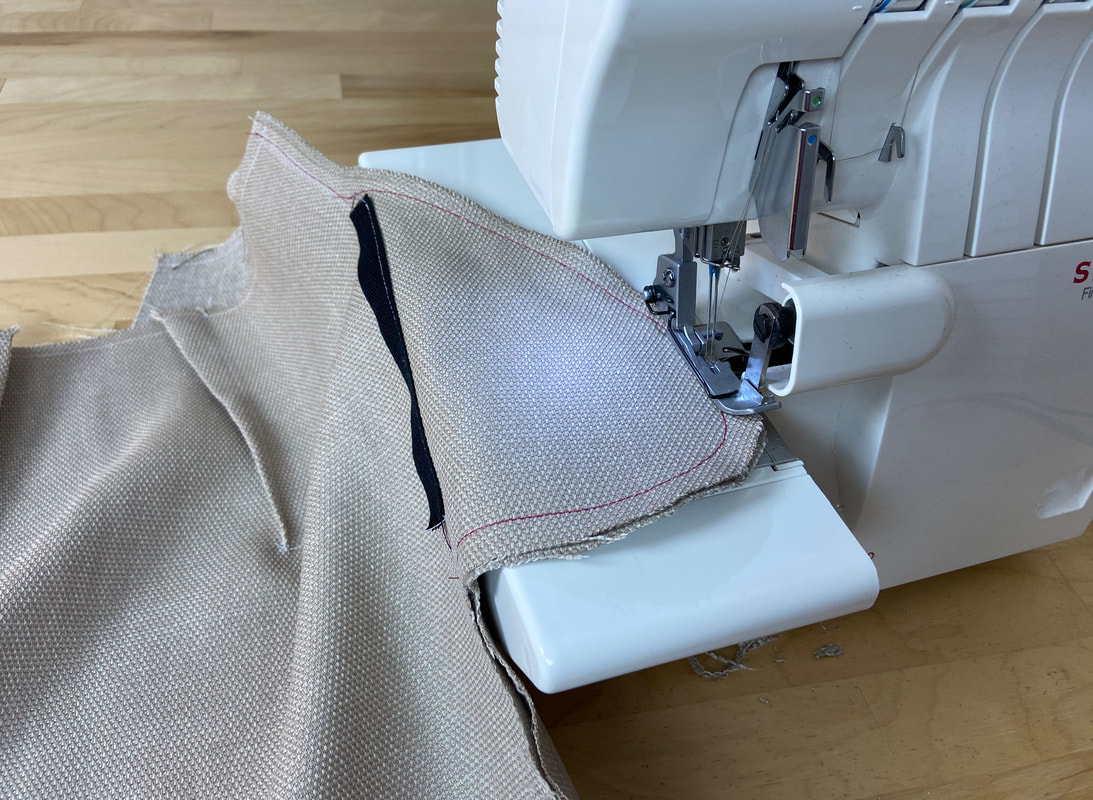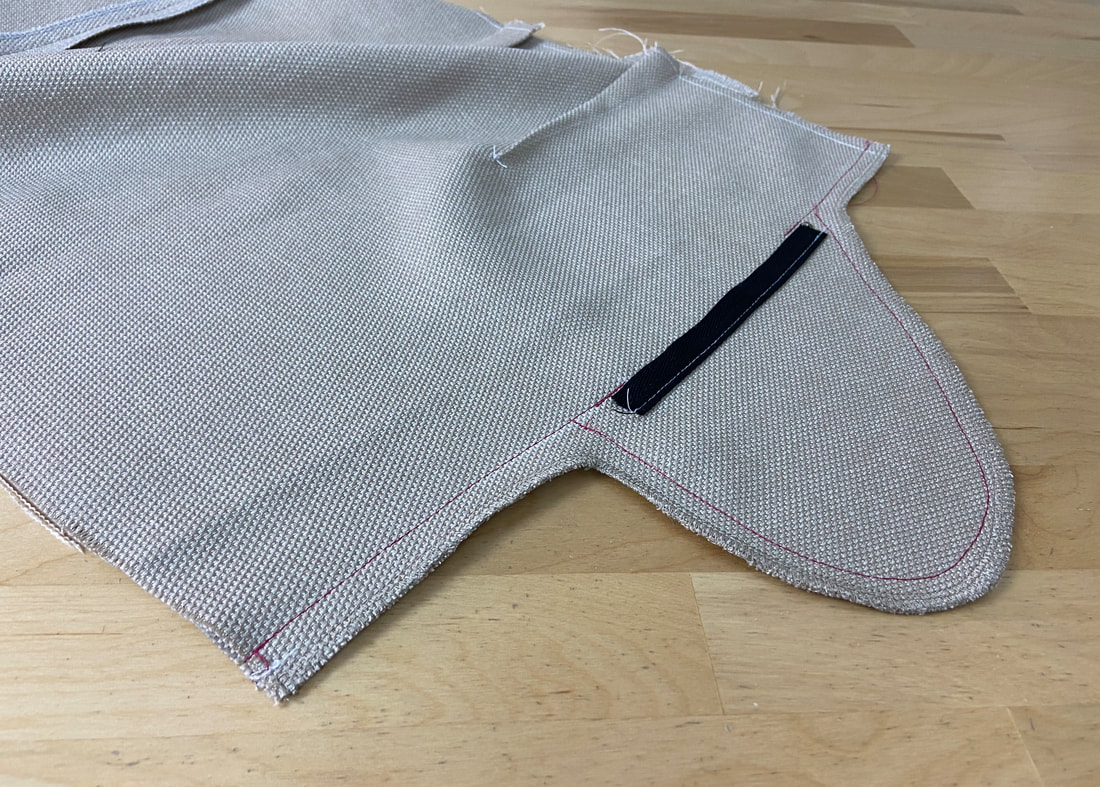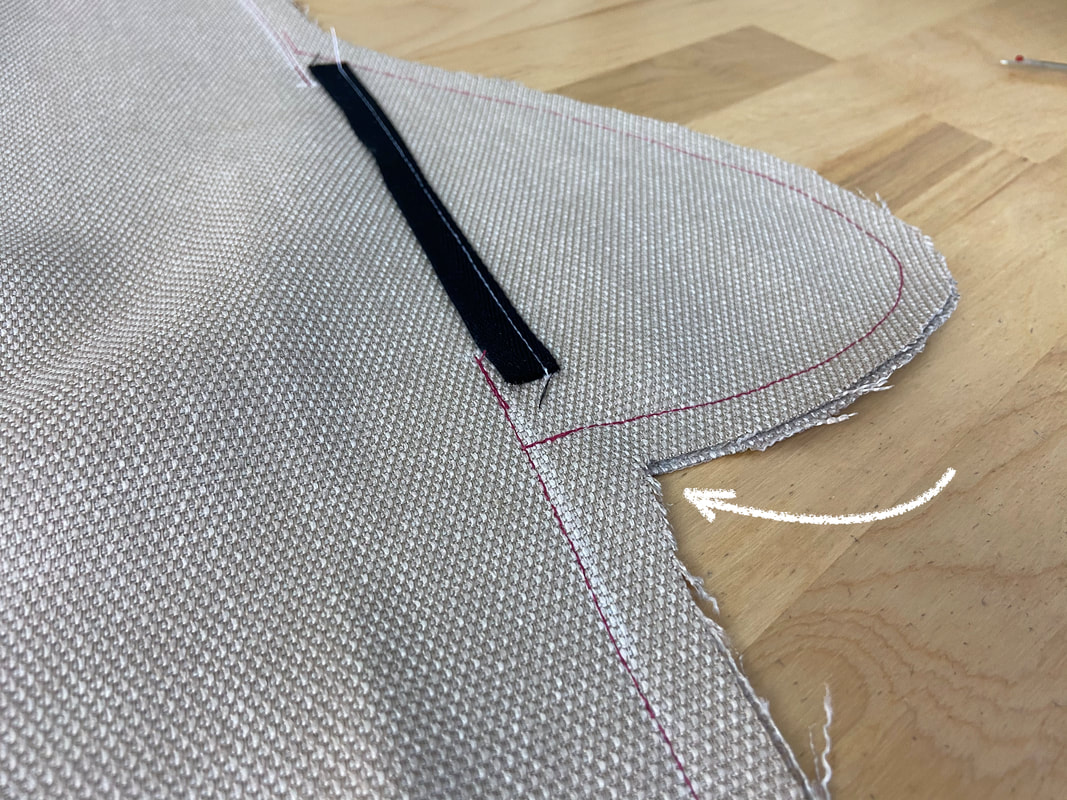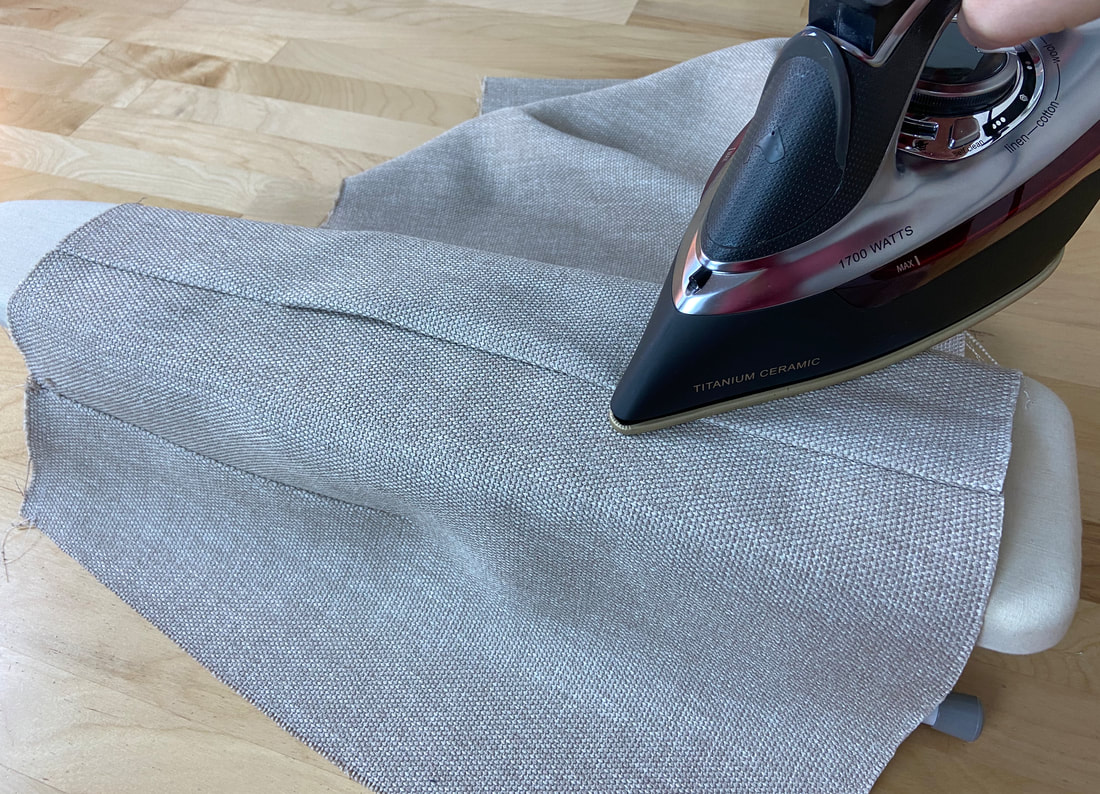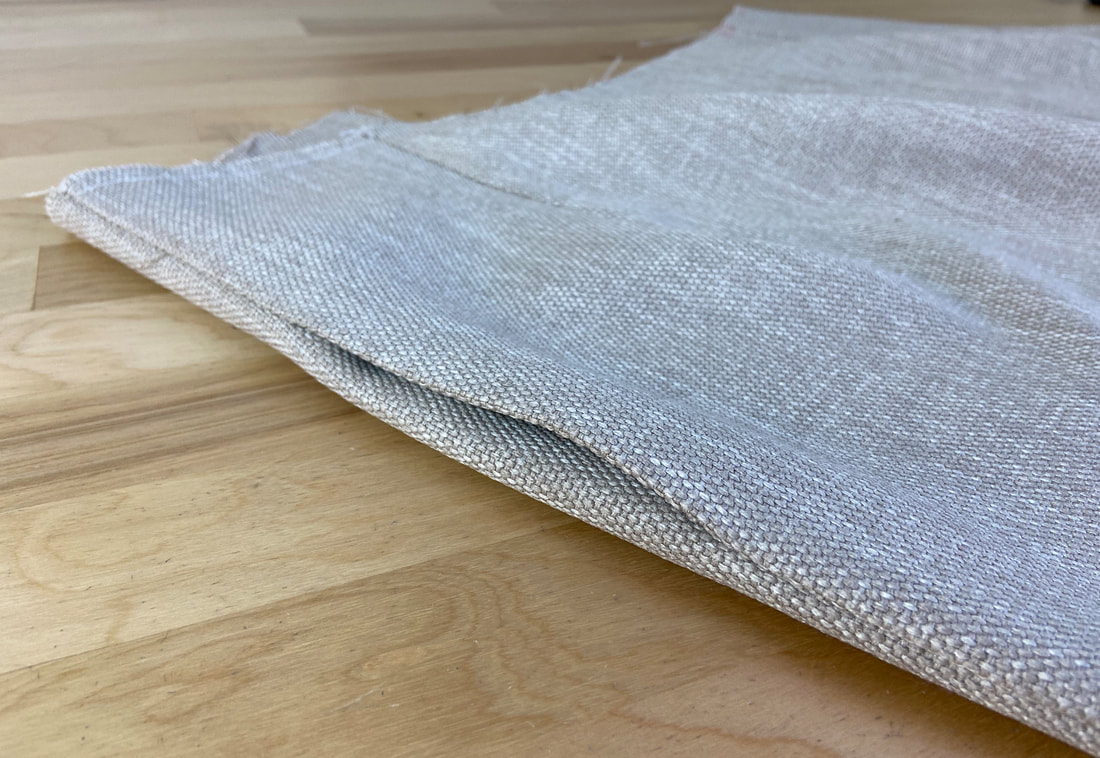What Are Extension On-Seam Pockets
As you might have guessed by its name, an on-seam pocket is one that is sewn directly into the seam. It is an understated, invisible pocket application that serves a functional purpose more than a decorative one.
On-seam pockets increase the quality and versatility of a garment while also providing an extra layer of comfort and functionality.
The most common on-seam pocket application is constructed of two separate pocket pieces. In some cases, each pocket portion is built into the garment to form an extension at each front and corresponding back seam. The latter is the easiest to sew, and the example shown below.
An on-seam pocket that is constructed as a built-in extension has no seams at the pocket opening. The front and back pocket portions are simply folded inwards to create the pocket bag, thus the pocket opening is created from these folded edges.
While the pocket extensions facilitate the sewing process by skipping the construction of a few extra seams, this on-seam pocket style is less durable and has less structure than the separate pocket bag version.
To strengthen the pocket opening, something called a stay is added on the inside of the front opening edge to structure the pocket extension and increase its durability with prolonged wear.
Regardless of on-seam pocket type, two important aspects to consider are the size of the pocket opening and its placement along the seam. Since on-seam pockets are usually added to the side seams of bottoms and dresses, they should be aligned such that the hand can comfortably be placed in without sitting too high or too low on the seam.
Luckily, if you are working with a store-bought pattern set, the pocket location is already decided for you. However, if you are drafting your own pattern, you will need to make the decision of where to place the pocket along the seam. The simplest way to do this is to hold your hand against the side of your body and find the most comfortable hand-pocket placement.
In terms of the pocket opening size, a good standard is length is anywhere from 5" to 6”. While you can go a little wider, it is best not to make the opening too narrow as this can make it quite uncomfortable during use.
Luckily, if you are sewing side pockets that are built into the garment layer (like the example in this tutorial), the placement of the pocket is pre-determined at the pattern drafting stage and automatically added into the seam.
Sewing An On-Seam Pocket That Extends From The Garment
With this pocket application, the front layer has a built-in pocket bag extension that is identical in shape to the corresponding pocket extension on the garment’s back layer.
Start by reinforcing the front pocket extension with twill or seam tape. In this example, twill tape is used. You can use a strip of heavy interfacing as an alternative.
1. Cut a piece of twill tape that measures the length of the pocket opening, and align it to the wrong side of the front pocket opening seamline as shown. The tape should not go past the seamline staying within the pocket bag length. Pin the twill tape to the front pocket layer.
2. Stitch the twill tape along its left edge to attach it to the garment.
3. Align the front garment seam to the corresponding back seam with face sides touching. The front and back pocket bag extensions should overlap and all edges should align. Insert pins through the top and bottom seam portions and along the pocket bag edges as shown.
4. For added stability, hand baste the pocket bag edges together. Doing so is especially helpful if the pocket bag edges are curved.
5. Start by stitching the garment seam from the top, ending at the top pocket opening. Backstitch at the end of the stitch as shown.
6. Stitch the bottom portion of the seam starting at the bottom pocket opening and moving down to the end of the seam. It is very important that you backstitch at the beginning of the stitch (bottom pocket opening).
Backstitching at the top and bottom of the pocket opening is essential in providing long-term durability and stability in the finished pocket application.
7. Next, stitch the pocket bag at the designated seam allowance. Once complete, remove the hand basting using a seam ripper.
8. To clean-finish all seam allowance edges, apply an overedge stitch to the garment’s seam and pocket bag in a continuous application. This is a simple but effective finish for unlined garments.
If the garment is fully lined, you can clip the seam allowance at both corners of the pocket bag, then iron the seam allowance edges open at both top and bottom portions of the seam. This clipping technique minimizes bulk and allows the finished seam to lay flat and smooth.
9. Regardless of which technique you use, always iron the finished on-seam pocket application pointing to the front of the garment.
In this process, the front pocket opening edge remains folded while the back pocket layer extend forward in a flat alignment.

